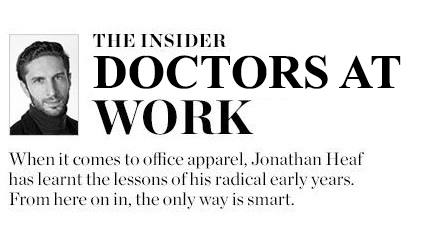Connect and take control of your business
Join the Inner Circle and save on exclusive products and services.
You have three subscription plans to select from. The Medicaid Essentials Plan, the Medicaid Business Plan and the Medicaid Business+ Plan. You enjoy unparalleled benefits for being an active member of the medical industry, you receive premium quality services by joining the online Medicaid Inner Circle™.
The Medicaid Inner Circle™ is an exclusive program provided in conjunction with Medicaid Health Finance, BPRE Real Estate, and Rainbow Digital Media. Being Medical Professionals we can offer you qualified credit advice and finance packages that are not available to the general public. You can also access the BPRE Real Estate Property HUB showcasing properties spread Australia wide.
You can enjoy real financial savings every year of your subscription from lower banking fees, lower than market finance rates to improving your Business Digital Presence and Web Design services including your own practice business mobile App for real ongoing patient engagement and access to the No Cost Pricing Medical Equipment Plan.
How your patients see you determines your success
Joining the Inner Circle will provide you with endless opportunities for complementing your practice image and profitability.

![]()
February 2019
Essential business attire for women.
Is the Medical Doctor's style, a matter of trust?
Regardless of profession, we all play out the sartorial ritual of considering colours, textures, and garments for work, school and play.
Clothing for doctors is more than just a matter of personal style: it is an emblem of their speciality, training and culture. In some cases, a physician’s attire is functional. A surgeon’s scrubs protect regular clothes from stains and patients from infection. Sometimes, it’s about creating a good first impression and projecting the more professional, conservative image often associated with medicine.
Go to a doctor’s office, for instance, and you’re more likely to find physicians donning a shirt and tie, or jacket and blouse when interacting with their patients. In almost all of these cases, the emblematic uniform of physicians – the white coat – is present and despite clear patient preferences about what doctors wear while working, even the top-ranked hospitals in the nation, only a handful offer formal guidance on attire. Many vaguely recommend that clothes be “professional,” but without defining what professional means?
In 21 of those studies, we found that patients had strong preferences about what physicians wore. And it looks like patients more often prefer for their doctors to wear formal clothing and white lab coats than not. Indeed, in 18 of the studies we reviewed, patients had a preference or positive association with this style of attire.
But as we reviewed these studies, three keys themes that suggest important variations in what patients may prefer their doctors to wear emerged. First, studies involving older patients or those from Europe or Asia all reported higher satisfaction when physicians wore formal attire.
Second, in an emergency, surgical or intensive care settings, scrubs were not only preferred by patients but also more often equated with professionalism. This makes sense, as in these more “hands-on,” procedure-oriented settings, formal suits, shirts and ties clearly seem out of place.
Finally, in doctors’ offices and outpatient clinics, scrubs were viewed unfavourably and often resulted in negative impressions. Thus, from the patient’s perspective, a “one size fits all” approach may not work for doctor attire. Rather, the context in which a patient interacts with their doctor influences what they expect to see.
What best practices can we recommend, especially for those that are entering as new residents?
When in doubt, formal attire with long-sleeved shirts and ties and jackets for men, and business attire for women, curating an office wardrobe with authority workwear pieces from the corporate to the creative, set the tone for a smart and stylish look that should prevail in nonemergency or nonoperative settings.
Yet few doctors or medical students consider the first impression they make on patients. And clothes have a lot to do with that. In an informal survey in our hospital, only two out of 30 medical students said that they actually thought about their dress when caring for hospitalised patients. Yet, over half of the medical students, we spoke to agreed that what they wear is likely to influence patient opinions about their doctors. This illustrates a larger discrepancy between what doctors ought to wear and what they do wear – one that may arise from competing concerns or lack of guidance.

Formal attire with long-sleeved shirts, jackets and ties for men.
Success is built upon trust
This practice should hold true not just for weekdays, but also when physicians are working weekends and after typical business hours. Patients and their expectations remain unchanged, regardless of the hour or day.
While scrubs are appropriate for operating or emergency rooms, we suggest changing into more formal attire to visit patients in the hospital or the clinic. Regardless of the occasion, flip-flops, showy jewellery or jeans simply don’t belong in the hospital, just as scrubs do not belong outside the hospital environment. Especially not in the grocery store.
Making a good first impression
How can we at Medicaid help you?
Contributing Authors
Vineet Chopra - Assistant Professor of Internal Medicine, University of Michigan and Sanjay Saint - Professor of Internal Medicine, University of Michigan
Disclosure statement
Authors do not work for, consult, own shares in or receive funding from any company or organisation that would benefit from this article, and have disclosed no relevant affiliations beyond their academic appointment.




